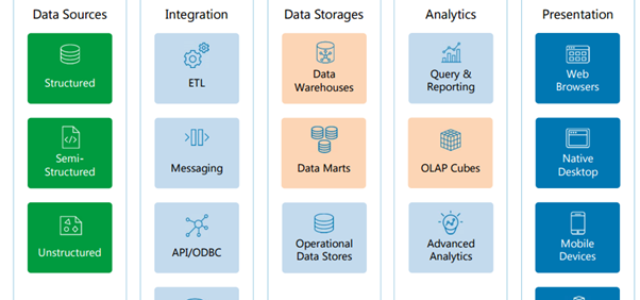Business digital transformation, it can certainly get your pulse racing as you start looking for the nearest exit. Digital transformation is being asked of everybody to get involved in but do we have a sufficient understanding of it?
Add in the magic ‘need’ so innovation can benefit from this business digital transformation and we begin to shift around in our chairs even more. What would it mean if we ‘went’ digital and transformed ourselves for innovation within our organisation?
I’ll be honest here, all the answers can’t be distilled here in this one post as digital is all evolving but I thought an opening set of thoughts on ‘digital transformation’ might trigger greater discussion and identification.
So what is a digital transformation?
We needed to step back and ask, what is truly transformational? Scott Anthony, the MD of Innosight wrote recently on this: “What do you really mean by business transformation”. He broke down the fundamental different categories of the effort put in to achieve some ‘sort’ of transformation.
The first is operational or doing what you are currently doing, better, faster or cheaper.
The second category focuses on the operational model, doing ‘things’ in a fundamentally different way
His final one has the most promise and peril, that is strategic. This is as he puts it transformation with a big capital “T” because it involves changing the very essence of a company.
So defining transformation when it is dropped into the next conversation is to ask what do you truly mean? He goes on to suggest a dual transformation might be an answer. I could really expand on that one but not here as I would subscribe to this myself as we need to have a dual mentality of an exploit and explore in our innovation activity. As a taster on this, I wrote something here.
We should link up digital transformation into its business purpose.
Undergoing any transformation must be for a reason (well hopefully) as it does incur a lot of pain before you get to the gain. Moving closer to our innovation need we can see digital transformation everywhere, it is actually all around us. The customer today feels a growing empowerment, in choice in personalization, in knowing the products or service they are buying are meeting their needs and these are becoming increasingly intelligent to meet these needs.
Companies need to increasingly interact with customers, as close or actually in real-time to learn, adapt and deliver to the needs. This requires a company to become far more ‘highly automated and adaptive’.
To get to this transforming point we need to build in a faster adaptation of business strategies and turn out faster innovation outcomes that meet these needs as key to this. Our transformation journey needs to embrace the cloud, mobile, data and networks and relies on higher levels of analytics to interpret and translate information, into insights, into ideas, into innovation that delivers on the ‘needs’ the customer wants solutions too.
Now that really does become transforming.
There is a rub here, most transformation projects seem to fail.
McKinsey in 2011 identified that 72% of transformation programs fail to deliver on their targets so there is an awful lot of thinking, planning and working through any transformation to make sure you end up with the 28% of the success stories.
I could outline countless ways to work through different examples, set about a strategic and operational digital transformation roadmap, to combine effective knowledge from people and excellence gained from what you need to do in IT and your technologies to get this going, but I will not here, as this is an opening primer, not a solution.
Yet if we want to enable innovation and digital transformation we need to work through three phases of detailed work:
- The appropriate identification to analyse existing strategy, identify the competitive forces, understand the business model drivers and pull together in an outline the objectives, performance and value opportunities;
- Set about planning these out, analyse, discovering potential pain points, the critical success factors, benchmarking others, defining the innovation and transformational need;
- We go to the creation part, what we can do and this requires producing different strategic maps, scorecards, value maps, performance measures and finally how we would prioritise innovation and those transformation initiatives.
Now that calls for some hard work and again, outside the scope herein providing just this teaser.
So we recognise digital transformation needs to lead somewhere, well it is really most likely to fundamentally alter your (innovation) business model.
I like this as a definition to tighten down digital but it opens us up to the darker side of digital transformation, the risk of digital disruption. They don’t necessarily go hand in hand as most advisors want you to believe as your pathway to becoming the ‘great disruptors’ but taking the global centre for business transformation at IMD and offering this definition it gives us more of a handle on where digital transformation will end up.
“Digital disruption is the impact of digital technologies and business models on a company’s value proposition and market position. Digital business transformation is an organisational change journey to adopt digital technologies and business models to improve performance. It involves challenging the assumptions that have underpinned prior success and stress-testing the ways in which companies deliver value to customers. It means changing the organisation itself, including its operations, culture, revenue model, and more”
We need to recognise digital does transform; it means lots (and lots of change) to get innovation repositioned. We need to ask can this lead to disruption, ours and others for competitive advantage?
Digital transformation is not just investing in more technology or making available the processes online, in the cloud or through mobile apps. That breed of digitalizing is nothing new, most have moved part way to this. We are talking here about:
“Digital transformation meaning nothing less than making strategic and comprehensive process and structure changes, throughout the business, using new, customer-oriented approaches. Ones that are so focused on the customer-centric part, as this delivers the direction (of focus) and then the pathway towards enablement that moves you to the final innovation delivery. Innovation that meets and even exceeds the customer need as identified, through these digital insights”
Only then is an organisation truly transforming into a top competitor for the new era for innovation delivery. This means processes, IT, change management, training and lots of it and having a clearly defined program.
So we come back to “why the pain?”
On the whole, digital transformation both increases revenue and decreases costs and inevitably your management will want to go there.
The upside for achieving greater growth and revenue comes from the experience of greater customer engagement. If you broaden out your multiple channels, you achieve a greater number of touch points. The more customers make use of multiple channels it is estimated can provide three times more valuable than pursuing that traditional single channel. As you chase for engagement, you seek customer experiences and this leads you to expect and look for growing market share.
The lowering of costs comes down the road, as you pilot through any digital transformation journey as you go closer to a platform unification and optimisation of staff, and technology as you gain from that invested dollar in insights, information, data and analysis if you have deployed your strategy to raise collaboration and productivity. The multiple dollar questions are how do you set about doing this?
More information, greater personalization is both unpredictable in what it yields and is an ongoing process. It never finishes because the point of digital transformation is to continually adapt, to knowledge flowing in as customer needs continually change and your job is to keep up and deliver on them.
Innovation & Digital Transformation eventually get joined at the hip.
The key to innovation is clear; it is experimentation and this needs flexibility, to adapt, be agile, to test ideas. To achieve this you have to go digital. The magnitude becomes the ability to scale fast, to clarify the scope quickly and have a high level of frequency to perform. Turning this digital insight into concepts and ideas, and then as fast as possible into innovation outcomes that respond to the needs and digital insights you gleaned from your customers.
What do we need that is different from today?
We need to know (like never before) what value is in the increasing data flowing into our organization, we need tools and methods to translate this, we need dynamic dashboards to inform to ‘right-speed’ the operations that show where we are in investment strategies, in priorities, in delivery management, in workforce and resource delivery, what delivery model is required for the type of innovation going through the system and lastly the development methodology we are applying to this to take it through the system. These call for a different approach to the innovation process.
Instantly our collaborative platforms need to be transformed. We need multiple crowdsourcing that captures the outside but also the inside of the organisation. Data and knowledge need to get tightly fused into the process and that means more predictive analytics.
We need to move towards a greater fluency and all working within the delivery of innovation need to understand increasingly the different intersections of technology and business and work at breaking down the barriers, resolving the hold-ups and equating more risk comes in as we speed up and engage.
We need to encourage the ‘art’ of not just minimum viable product practices from lean practices, but far more importantly minimum viable transformation that has at its core validated learning, how it all interacts to form a cohesive innovation delivery point. So to achieve this MVT we need to rethink business systems and the whole go-to-market potential that includes what service supports, the customer engagement levels, the channel strategies and the eventual distributions.
Is it possible? Let me finish on one innovation delivery example already successfully working in today’s market.
One company that has been excelling at insight capture is the Spanish fashion retailer Zara, owned by Inditex. It tells a digital transformational story.
The key to their transformational success has been how they treat insights. Insights gained from Zara sales associates and managers are critical to Zara’s business model, which are based on sensing shifts in fashion trends and delivering clothes that exemplify them before they become passé.
To do this Zara trains store managers and sales associates to elicit feedback from customers about what they like, dislike, and would purchase if it were available. They also communicate their own ideas about what will or won’t sell.
These insights are captured in Zara stores around the world and reviewed by-product designers at corporate headquarters. Zara’s has become a vertically integrated structure, in which manufacturing and supply chains are located in Europe for the fastest-moving product lines, gets products to stores in as little as 10 days with most sourcing coming from Asia or Latin America.
Most important for Zara, the business model encourages customers to visit the stores often to get the styles they want, because clothes are produced in limited quantities and stock turns over quickly.
For Zara, the quality and timeliness of employee insights help the company identify what will sell, with few misses.
In fact, less than 1 per cent of Zara’s products fail—versus 10 per cent for competitors—despite producing nearly 10 times more kinds of products per year. Zara’s store managers and employees are doing more than simply reporting what customers tell them. They are using their knowledge of fashion trends, their professional experience, and their ability to ask the right questions.
At a time when most retailers are “deskilling” frontline jobs and requiring less of their employees, Zara is counting on them to be the eyes and ears of the company, and Zara is paying more for those skills.
(This case on Zara was extracted from IMD).
It combines much of the digital transformation underway. It involves technology delivering on the knowledge and insights of people who are engaging with their customers.
My end of post message: Sticking to traditional ways of doing business not only means missing out on the benefits of digital transformation—in today’s dynamic marketplace, it’s no longer even safe, it just means you are the eventual loser or have lost completely.
Article by channel:
Everything you need to know about Digital Transformation
The best articles, news and events direct to your inbox
Read more articles tagged: Featured, Innovation, Strategy







